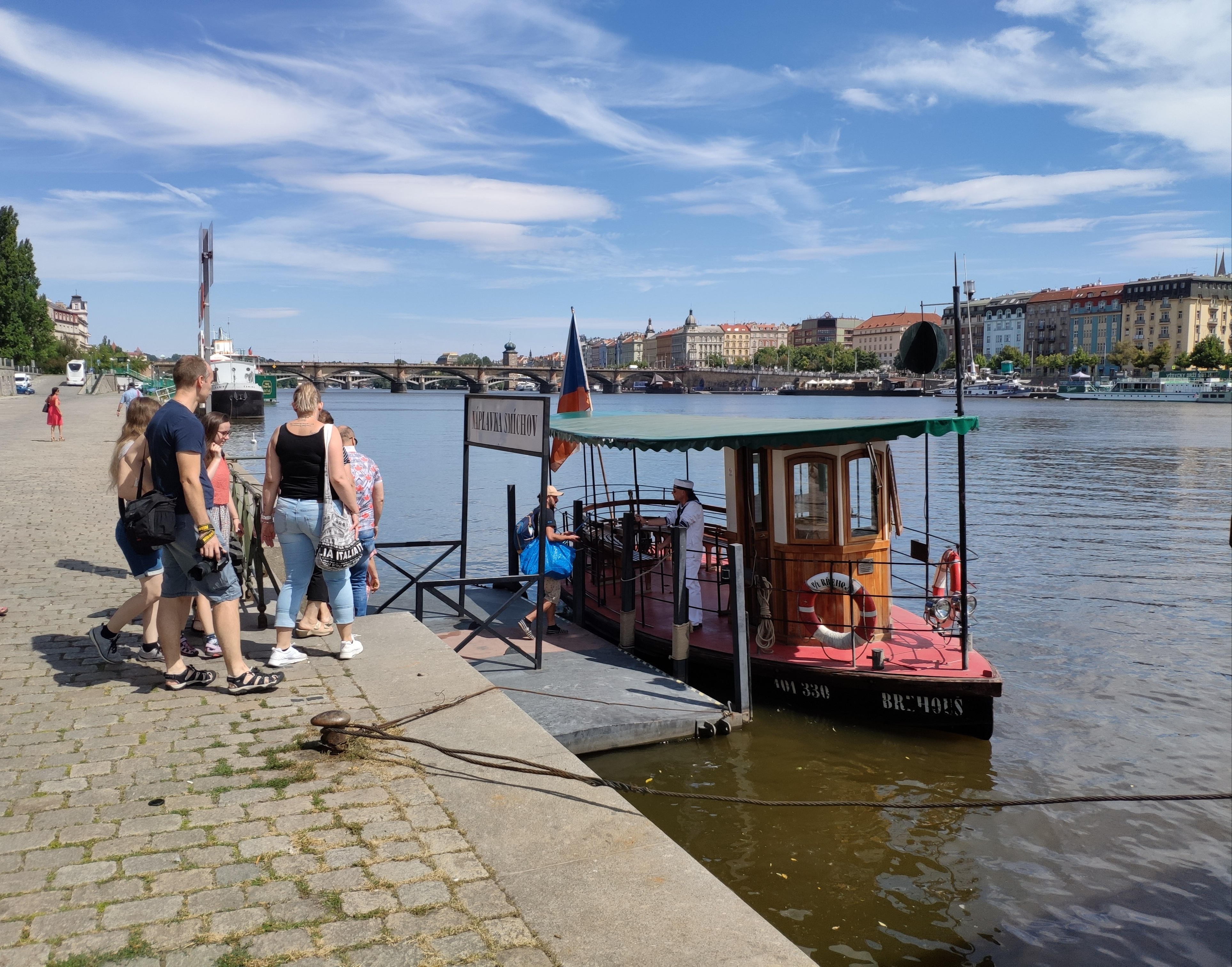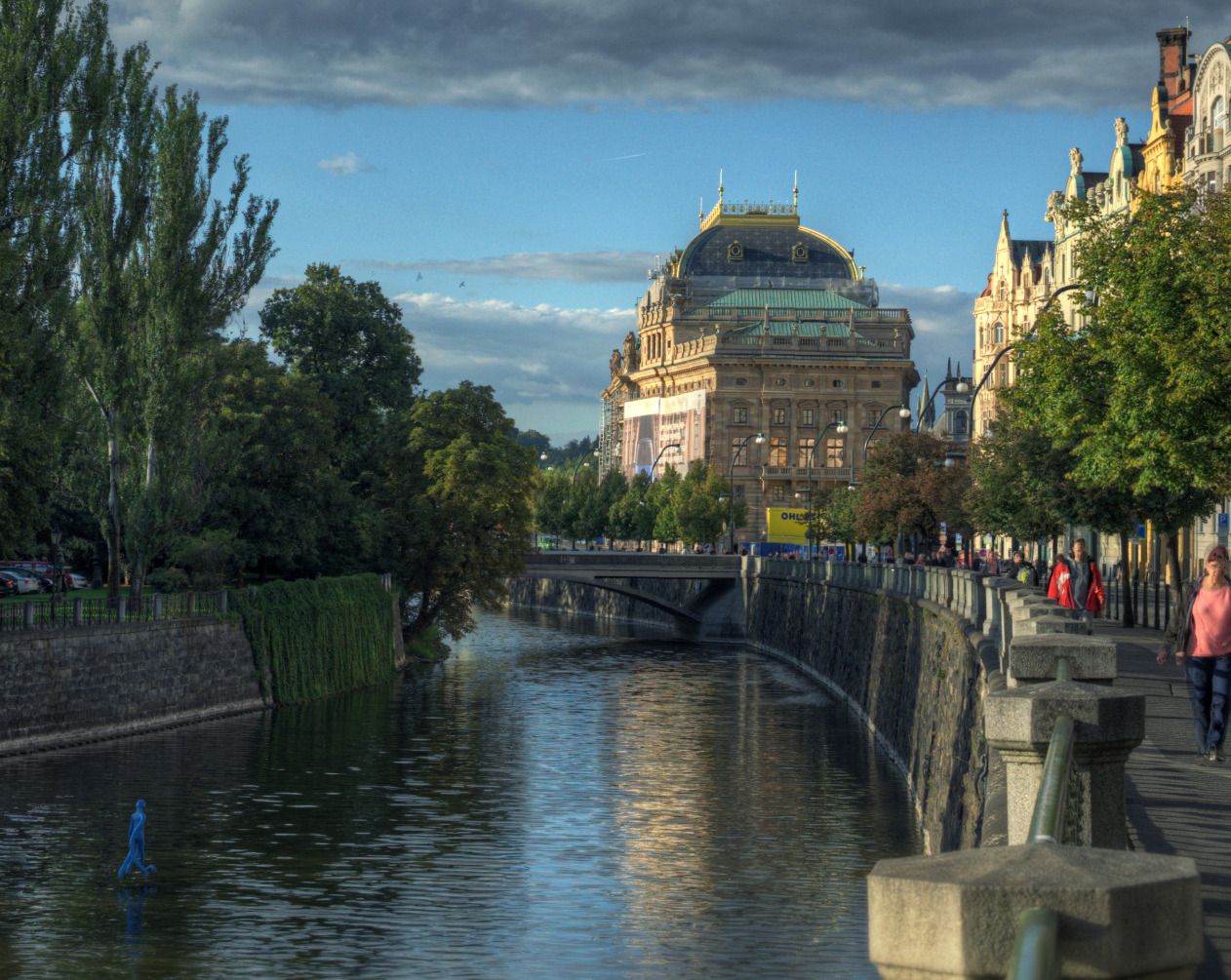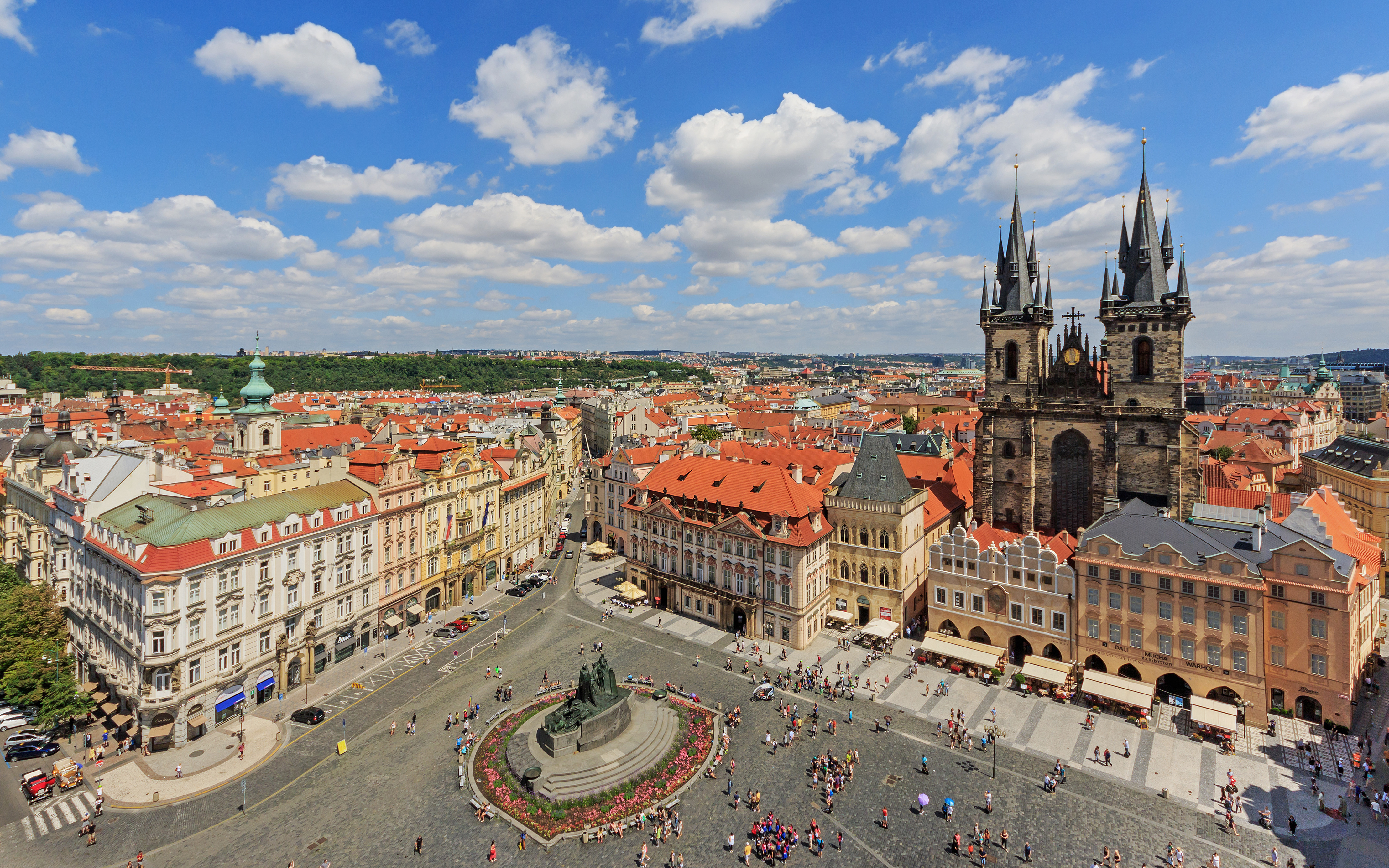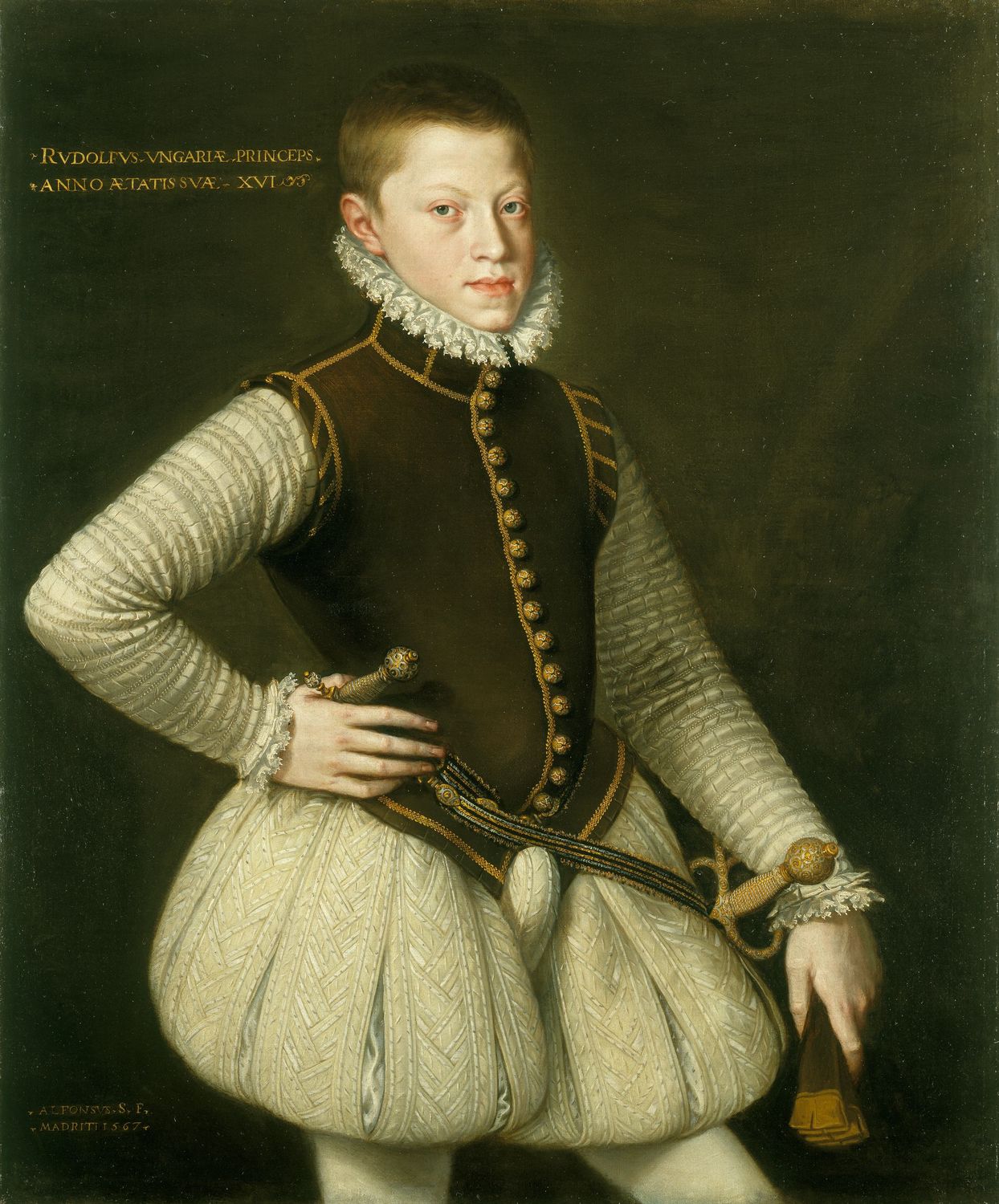|
Prague
Prague ( ; ) is the capital and List of cities and towns in the Czech Republic, largest city of the Czech Republic and the historical capital of Bohemia. Prague, located on the Vltava River, has a population of about 1.4 million, while its Prague metropolitan area, metropolitan area is home to approximately 2.3 million people. Prague is a historical city with Romanesque architecture, Romanesque, Czech Gothic architecture, Gothic, Czech Renaissance architecture, Renaissance and Czech Baroque architecture, Baroque architecture. It was the capital of the Kingdom of Bohemia and residence of several Holy Roman Emperors, most notably Charles IV, Holy Roman Emperor, Charles IV (r. 1346–1378) and Rudolf II, Holy Roman Emperor, Rudolf II (r. 1575–1611). It was an important city to the Habsburg monarchy and Austria-Hungary. The city played major roles in the Bohemian Reformation, Bohemian and the Protestant Reformations, the Thirty Years' War and in 20th-century history a ... [...More Info...] [...Related Items...] OR: [Wikipedia] [Google] [Baidu] |
Czech Republic
The Czech Republic, also known as Czechia, and historically known as Bohemia, is a landlocked country in Central Europe. The country is bordered by Austria to the south, Germany to the west, Poland to the northeast, and Slovakia to the southeast. The Czech Republic has a hilly landscape that covers an area of with a mostly temperate Humid continental climate, continental and oceanic climate. The capital and largest city is Prague; other major cities and urban areas include Brno, Ostrava, Plzeň and Liberec. The Duchy of Bohemia was founded in the late 9th century under Great Moravia. It was formally recognized as an Imperial Estate of the Holy Roman Empire in 1002 and became Kingdom of Bohemia, a kingdom in 1198. Following the Battle of Mohács in 1526, all of the Lands of the Bohemian Crown were gradually integrated into the Habsburg monarchy. Nearly a hundred years later, the Protestantism, Protestant Bohemian Revolt led to the Thirty Years' War. After the Battle of White ... [...More Info...] [...Related Items...] OR: [Wikipedia] [Google] [Baidu] |
Prague Castle
Prague Castle (; ) is a castle complex in Prague, Czech Republic serving as the official residence and workplace of the president of the Czech Republic. Built in the 9th century, the castle has long served as the seat of power for List of rulers of Bohemia, kings of Bohemia, Holy Roman Empire, Holy Roman emperors, and List of Presidents of Czechoslovakia, presidents of Czechoslovakia. As such, the term "Prague Castle" or simply the "Castle" or "the Hrad (politics), ''Hrad''" are often used as metonymy for the president and his staff and advisors. The Bohemian Crown Jewels are kept within a hidden room inside it. According to the ''Guinness Book of Records'', Prague Castle is the largest ancient castle in the world, occupying an area of almost , at about in length and an average of about wide. The castle is among the most visited tourist attractions in Prague, attracting over 1.8 million visitors annually. History Přemyslid fort The history of the castle began in 870 when it ... [...More Info...] [...Related Items...] OR: [Wikipedia] [Google] [Baidu] |
Prague Metropolitan Area
The Prague metropolitan area () is the metropolitan area of Prague, the capital city of the Czech Republic. The population is 2,264,690 as of 2024. It is the most populous metropolitan area in the country. Economy In 2021, Prague's gross metropolitan product was €92.3 billion. This puts Prague in 24th place among cities in the European Union. Municipalities The metropolitan area has 491 municipalities. See also * List of EU metropolitan areas by GDP A metropolitan region's gross domestic product, or GDP, is one of several measures of the size of its economy. Similar to GDP, GMP is defined as the market value of all final goods and services produced within a metropolitan region in a given ... References Geography of Prague Metropolitan areas of the Czech Republic Prague Urban areas in the Czech Republic Long stubs with short prose {{Prague-geo-stub ... [...More Info...] [...Related Items...] OR: [Wikipedia] [Google] [Baidu] |
Czech Gothic Architecture
Czech Gothic architecture refers to the architectural period primarily of the Late Middle Ages in the area of the present-day Czech Republic (former Crown of Bohemia, primarily consisting of the Kingdom of Bohemia and Margraviate of Moravia). The Gothic style first appeared in the Czech lands in the first half of the 13th century and was usual there until the early 16th century. The phases of the development of the Gothic architecture in the Czech lands are often named after the Bohemian ruling dynasty of the corresponding time: * Early Gothic – Přemyslid Gothic (13th and early 14th century) * High Gothic – Luxembourg Gothic (14th and early 15th century) * Late Gothic – Jagiellonian Gothic (approximately 1471–1526) The most significant Gothic architects who worked in the Czech lands (especially in Bohemia) were Peter Parler and Benedikt Ried. Early Gothic The Gothic style penetrated the Czech lands in the first half of the 13th century – in the time when ... [...More Info...] [...Related Items...] OR: [Wikipedia] [Google] [Baidu] |
Kingdom Of Bohemia
The Kingdom of Bohemia (), sometimes referenced in English literature as the Czech Kingdom, was a History of the Czech lands in the High Middle Ages, medieval and History of the Czech lands, early modern monarchy in Central Europe. It was the predecessor state of the modern Czech Republic. The Kingdom of Bohemia was an Imperial State in the Holy Roman Empire. The List of Bohemian monarchs, Bohemian king was a prince-elector of the empire. The kings of Bohemia, besides the region of Bohemia itself, also ruled other Lands of the Bohemian Crown, lands belonging to the Bohemian Crown, which at various times included Moravia, Silesia, Lusatia, and parts of Saxony, Brandenburg, and Bavaria. The kingdom was established by the Přemyslid dynasty in the 12th century by the Duchy of Bohemia, later ruled by the House of Luxembourg, the Jagiellonian dynasty, and from 1526 the House of Habsburg and its successor, the House of Habsburg-Lorraine. Numerous kings of Bohemia were also elected Hol ... [...More Info...] [...Related Items...] OR: [Wikipedia] [Google] [Baidu] |
Czech Renaissance Architecture
Czech Renaissance architecture refers to the architectural period of the early modern era in Bohemia, Moravia and Czech Silesia, which then comprised the Crown of Bohemia and today constitute the Czech Republic. The Renaissance style Renaissance architecture is the European architecture of the period between the early 15th and early 16th centuries in different regions, demonstrating a conscious revival and development of certain elements of Ancient Greece, ancient Greek and ... flourished in the Czech lands from the late 15th century to the first half of the 17th century. In the Crown of Bohemia as well as in other parts of Central Europe the Renaissance style was accepted slower than in southern Europe and its development was delayed in comparison with Italy. It was partly caused by the situation in the Kingdom after the Hussite Wars. The Bohemian Reformation was mistrustful of the influences coming from the "papal" Italy and rather respected the traditional values expresse ... [...More Info...] [...Related Items...] OR: [Wikipedia] [Google] [Baidu] |
Malá Strana
Malá Strana ( Czech for "Little Side (of the River)", ) or historically Menší Město pražské () is a district of the city of Prague, Czech Republic, and one of its most historic neighbourhoods. In the Middle Ages, it was a dominant center of the ethnic German (and since 16th century also Italian) citizens of Prague. It also housed many noble palaces while the right-bank towns were comparatively more bourgeois and more Bohemian Czech. Name The name Malá Strana literally means "Little Side", though it is frequently referred to as "Lesser Town", "Lesser Quarter", or "Lesser Side". It is on the left (west) bank of the river Vltava, on the slopes just below Prague Castle. The name distinguishes it from the larger districts of Prague on the right bank, with which it is linked by the Charles Bridge. Originally, when it was founded in 1257, the district was called the ''New Town beneath Prague Castle'' (). When Charles IV founded the New Town of Prague in 1348, Malá Strana ... [...More Info...] [...Related Items...] OR: [Wikipedia] [Google] [Baidu] |
Vltava
The Vltava ( , ; ) is the longest river in the Czech Republic, a left tributary of the Elbe River. It runs southeast along the Bohemian Forest and then north across Bohemia, through Český Krumlov, České Budějovice, and Prague. It is commonly referred to as the "Czech national river". Etymology Both the Czech name ' and the German name ' are believed to originate from the old Germanic words ' 'wild water' (compare Latin '). In the ' (872 AD) it is called '; from 1113 AD it is attested as '. In the ' (1125 AD) it is attested for the first time in its Bohemian form, '. Course The Vltava originates by a confluence of two rivers, the Teplá Vltava, which is longer, and the Studená Vltava, originating in Bavaria. From a water management point of view, the Vltava and Teplá Vltava are one river with single numbering of river kilometres. The Teplá Vltava originates in the territory of Kvilda in the Bohemian Forest at an elevation of , on the slope of the Čern� ... [...More Info...] [...Related Items...] OR: [Wikipedia] [Google] [Baidu] |
Charles IV, Holy Roman Emperor
Charles IV (; ; ; 14 May 1316 – 29 November 1378''Karl IV''. In: (1960): ''Geschichte in Gestalten'' (''History in figures''), vol. 2: ''F–K''. 38, Frankfurt 1963, p. 294), also known as Charles of Luxembourg, born Wenceslaus (, ), was Holy Roman Emperor from 1355 until his death in 1378. He was elected King of Germany (King of the Romans) in 1346 and became King of Bohemia (as Charles I) that same year. He was a member of the House of Luxembourg from his father's side and the Bohemian House of Přemyslid from his mother's side; he emphasized the latter due to his lifelong affinity for the Bohemian side of his inheritance, and also because his direct ancestors in the Přemyslid line included two saints. He was the eldest son and heir of John of Bohemia, King of Bohemia and Count of Luxembourg, who died at the Battle of Crécy on 26 August 1346. His mother, Elizabeth of Bohemia (1292–1330), Elizabeth, Queen of Bohemia, was the sister of Wenceslaus III of Bohemia, W ... [...More Info...] [...Related Items...] OR: [Wikipedia] [Google] [Baidu] |
National Theatre (Prague)
The National Theatre () is a historic opera house in Prague, Czech Republic. It is known as the alma mater of Czech opera, and as the national monument of Czech history and art. The National Theatre belongs to the most important Czech cultural institutions, with a rich artistic tradition, which helped to preserve and develop the most important features of the nation–the Czech language and a sense for a Czech musical and dramatic way of thinking. Today the National Theatre consists of three artistic ensembles: opera, ballet and drama. They alternate in their performances in the historic building of the National Theatre, in the State Opera, in the Estates Theatre and in the Kolowrat Theatre. All three artistic ensembles select their repertoire both from classical heritage, and modern authors. Initial design and construction, 1844 to 1881 The cornerstone of the National Theatre was laid on 16 May 1868, but the idea of building a theatre dates back to the autumn of 1844 at ... [...More Info...] [...Related Items...] OR: [Wikipedia] [Google] [Baidu] |
Old Town Square
Old Town Square ( or colloquially , ) is a historic square in the Old Town quarter of Prague, the capital of the Czech Republic. It is located between Wenceslas Square and Charles Bridge. Buildings The square features buildings belonging to various architectural styles, including the Gothic Church of Our Lady before Týn, which has been the main church of this part of the city since the 14th century. Its characteristic towers are 80 m high. The Baroque St. Nicholas Church is another church located in the square. Prague Orloj is a medieval astronomical clock mounted on the Old Town Hall. The clock was first installed in 1410, making it the third-oldest astronomical clock in the world and the oldest one still in operation. The tower of the Old Town Hall is open to the public and offers panoramic views of the Old Town. An art museum of the Czech National Gallery is located in the Kinský Palace. Statues and memorials The square's centre is home to a statue of religio ... [...More Info...] [...Related Items...] OR: [Wikipedia] [Google] [Baidu] |
Rudolf II, Holy Roman Emperor
Rudolf II (18 July 1552 – 20 January 1612) was Holy Roman Emperor (1576–1612), King of Hungary and Kingdom of Croatia (Habsburg), Croatia (as Rudolf I, 1572–1608), King of Bohemia (1575–1608/1611) and Archduke of Austria (1576–1608). He was a member of the House of Habsburg. Rudolf's legacy has traditionally been viewed in three ways:Hotson, 1999. an ineffectual ruler whose mistakes led directly to the Thirty Years' War; a great and influential patron of Northern Mannerism, Northern Mannerist art; and an intellectual devotee of occult arts and learning which helped seed what would be called the Scientific Revolution. Determined to unify Christendom, he initiated the Long Turkish War (1593–1606) with the Ottoman Empire. Exhausted by war, his citizens in Kingdom of Hungary (1526-1867), Hungary revolted in the Bocskai uprising, Bocskai Uprising, which led to more authority being given to his brother Matthias, Holy Roman Emperor, Matthias. Under his reign, there was ... [...More Info...] [...Related Items...] OR: [Wikipedia] [Google] [Baidu] |







